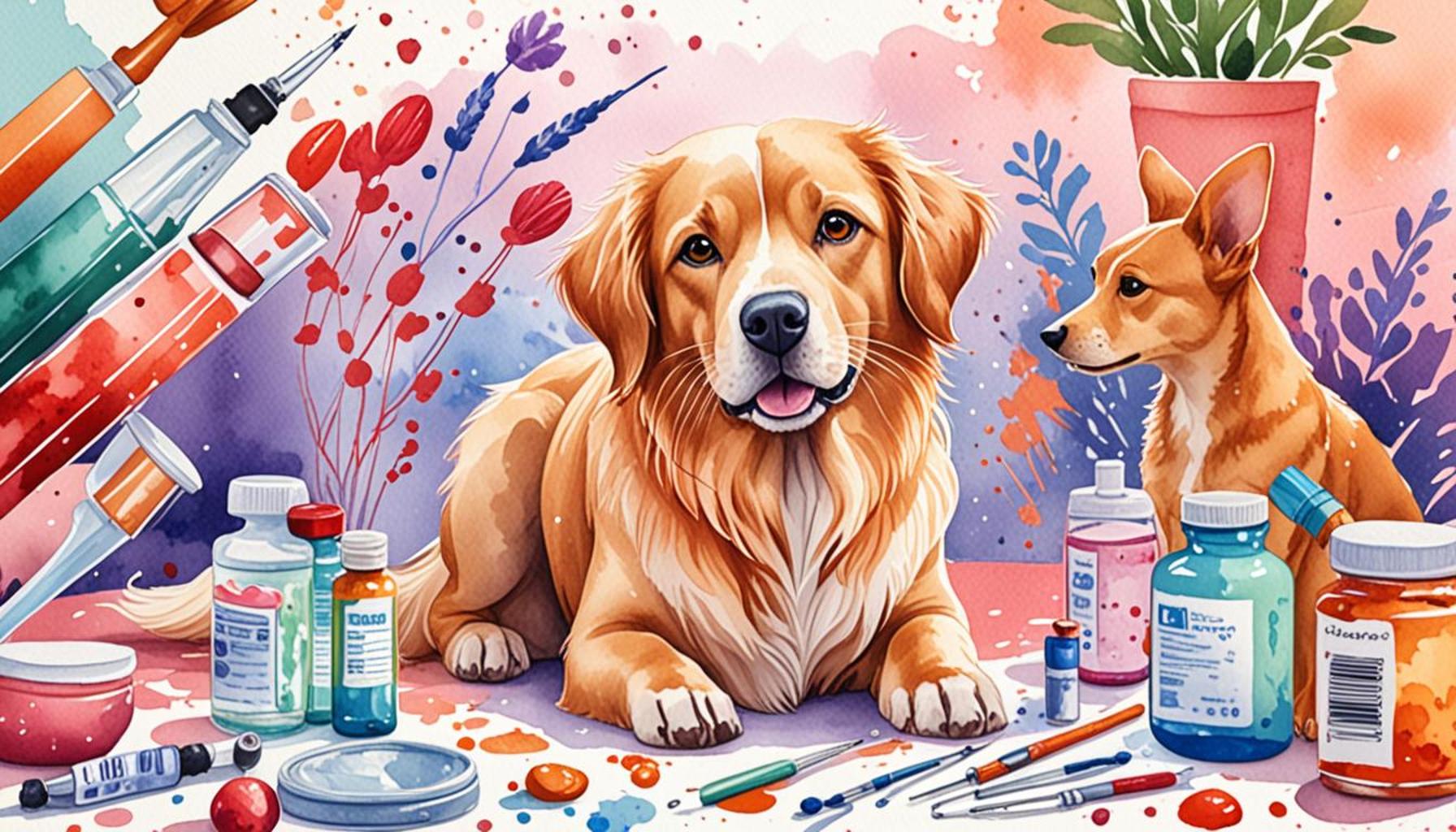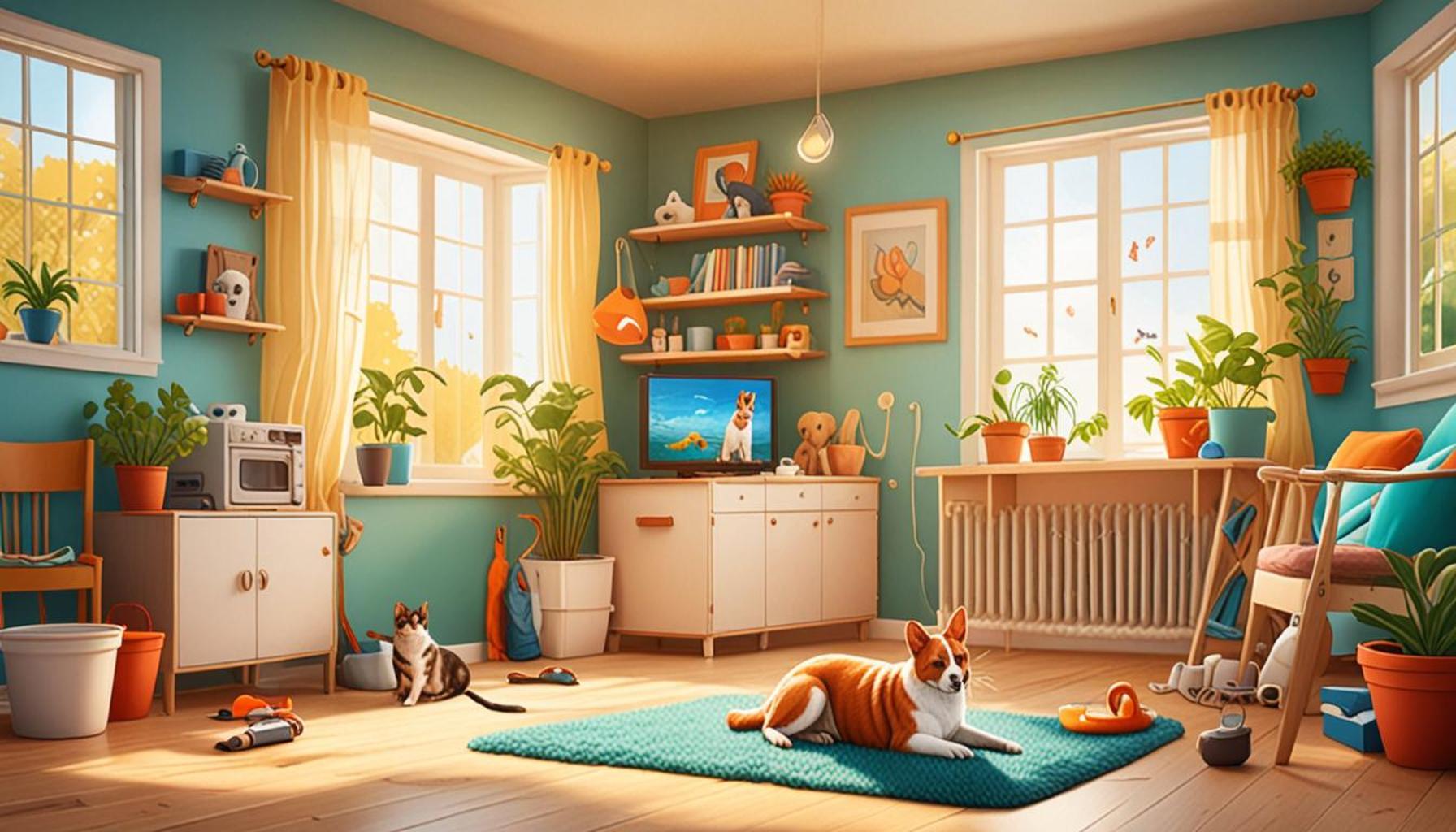The importance of hydration: how to ensure your pet drinks enough water

Understanding Pet Hydration
Many pet owners overlook one crucial aspect of their furry friends’ health: hydration. Just like humans, pets require an adequate intake of water to thrive, and insufficient hydration can lead to serious health issues. Whether it’s a playful puppy or an elderly feline, ensuring that your pet remains well-hydrated is essential for their overall well-being. So, what can you do to ensure that your pet stays hydrated and healthy?
The Key Benefits of Proper Hydration
- Supports organ function: Water plays a vital role in kidney and digestive health. Proper hydration helps flush out toxins and aids in nutrient absorption, which is crucial for optimal organ performance.
- Regulates temperature: Hydration helps pets maintain a stable body temperature. This is particularly important in hot weather or for active pets, as even slight dehydration can lead to overheating and heatstroke.
- Enhances energy levels: Adequate water intake boosts overall vitality. Dehydration can lead to lethargy, so keeping your pet well-hydrated ensures they remain playful and energetic.
While their water needs may differ based on factors such as size, age, and activity level, it is essential to provide fresh water daily. For example, an active Labrador may require more water than a sedentary Chihuahua. Pet hydration varies by species, diet, and climate, making it necessary for owners to pay close attention to their pets’ drinking habits. Feeding dry kibble typically necessitates a higher water intake compared to wet food, which has a higher moisture content.
Tips to Encourage Water Intake
- Keep water bowls clean and filled. Pets may shy away from dirty or stale water, so ensure their drinking containers are washed regularly and filled with fresh water at all times.
- Consider pet fountains that entice animals to drink. Many dogs and cats are attracted to moving water, which can encourage them to drink more. These fountains not only keep water circulating but can also help filter impurities.
- Incorporate wet food into their diet, which adds moisture. If your pet is reluctant to drink water, mixing in wet food or pureeing some vegetables can provide both hydration and nutrition.
Moreover, you can monitor your pet’s hydration through simple methods, such as skin tenting or checking their gums. Well-hydrated pets have moist gums and a quick return to a normal position when you gently pinch the skin at the back of their neck. By understanding the importance of hydration and actively fostering your pet’s water consumption, you can significantly improve their quality of life. With a little attention and mindfulness toward their drinking habits, you can help ensure your furry companions lead happy and vibrant lives. Stay tuned as we explore more about this often-neglected aspect of pet care.
LEARN MORE: Click here to dive deeper
The Risks of Dehydration in Pets
Understanding the detrimental effects of dehydration is crucial for every pet owner. Pets can easily become dehydrated, especially during warmer months or high-energy activities. In fact, according to the American Animal Hospital Association, even a loss of just 10% of their body weight due to fluid loss can lead to severe health problems for pets. Dehydration can impair various bodily functions, resulting in complications that may include organ failure, lethargy, and, in extreme cases, death.

Signs of Dehydration
Recognizing the signs of dehydration in your furry companions can help you take swift action. Here are some common symptoms to watch for:
- Dry gums and lethargy: One of the earliest indicators is dry or sticky gums. A well-hydrated pet typically has gums that are moist and pink. Additionally, if your pet seems more sluggish than usual, it could be a sign of dehydration.
- Loss of skin elasticity: You can perform a simple test known as skin tenting. Gently pinch the skin at the back of their neck and release. If it snaps back quickly, your pet is likely adequately hydrated; if it takes time to return to its normal position, they may be dehydrated.
- Reduced urination: Pay attention to your pet’s bathroom habits. Dehydration often results in reduced urine output. If you notice less frequent bathroom breaks, it may be time to increase their water intake.
- Vomiting or diarrhea: Any signs of gastrointestinal distress can contribute to fluid loss. If your pet is vomiting or has diarrhea, they are at an increased risk for dehydration.
Implementing strategies to ensure your pet stays hydrated can dramatically reduce the likelihood of these serious symptoms. Pet owners should recognize that hydration is not simply about filling a bowl but understanding their pet’s unique needs and behaviors. For instance, during particularly hot or dry spells, pets may require more water than usual, especially if they engage in strenuous activities.
Pet Water Intake Guidelines
As a general guideline, pets should drink about 1 ounce of water per pound of body weight daily. However, this can depend on various factors including size, activity level, and diet. For example, a 20-pound dog should drink around 20 ounces of water each day—but this may increase if they are active or live in hotter climates.
To determine if your pet is drinking enough, keep an eye on their behavior and adjust as needed. Always provide access to fresh, clean water, and create an inviting environment to foster a drinking habit. By staying attuned to your pet’s hydration levels, you can help prevent serious health issues and contribute to a longer, happier life.
The Importance of Hydration: How to Ensure Your Pet Drinks Enough Water
Ensuring your pet stays hydrated is not just about providing a bowl of water; it’s a crucial aspect of pet care that can significantly affect your furry friend’s health and well-being. Dehydration can lead to severe consequences, including kidney failure and urinary tract infections. In addition, some pets can be picky drinkers, which makes it vital to understand effective ways to encourage water intake. Here, we will explore various strategies to ensure that your pet stays adequately hydrated, promoting a healthier, happier life.
| Advantage | Explanation |
|---|---|
| Promotes Digestive Health | Adequate hydration aids in digestion, preventing issues such as constipation. |
| Regulates Body Temperature | Staying hydrated helps pets to cool down and maintain a stable body temperature. |
| Improves Skin and Coat Condition | Proper hydration can lead to healthier skin and a shinier coat. |
| Prevents Urinary Issues | Increased water intake can help dilute urine, preventing the formation of crystals and stones. |
By understanding the benefits of hydration and implementing strategies that encourage your pet to drink more water, you can play a significant role in enhancing your pet’s overall health. Simple changes such as providing clean water, using water fountains, or incorporating high-water-content foods in their diet can have a profound impact. As you consider various methods, remain observant of your pet’s drinking habits and adjust accordingly to ensure they are consistently hydrated.
DISCOVER MORE: Click here for tips on preparing your pet for environmental changes
Strategies to Encourage Water Intake
To keep your pet adequately hydrated, you must incorporate various effective strategies to encourage them to drink enough water. While it might seem straightforward to provide a bowl of water, many pets can be picky or disinterested. Here are some practical suggestions to help your furry friends drink more:
Utilize Multiple Water Bowls
One simple yet effective way to increase your pet’s water intake is by placing multiple water bowls around your home. Different locations—such as the living room, kitchen, and even the backyard—can make water more accessible, especially as pets tend to explore their surroundings. Additionally, having a backup bowl can help if one bowl gets knocked over or if a pet’s favorite spot is temporarily unavailable.
Try Different Bowl Types
The type of bowl you use can significantly impact your pet’s willingness to drink. Some pets prefer ceramic or stainless steel bowls because they don’t hold onto odors and are easy to clean. Others may find weighted bowls more stable and less likely to be tipped over during enthusiastic drinking. Experimenting with various shapes and sizes of bowls may help you discover your pet’s preference, ultimately promoting better hydration habits.
Water-Infused Treats
Integrating water-rich foods into your pet’s diet is another clever way to boost hydration. Treats such as cucumber, watermelon, and even blueberries are not only hydrating but also pack a nutritional punch. For dogs, you can prepare homemade frozen treats by blending pureed fruits with water and freezing them in molds, which can provide snacking fun while increasing their water intake. Similarly, if you own cats, consider offering canned food with higher moisture content or adding a bit of low-sodium broth to their dry kibble.
Incorporate Water Fountains
Pets are often more attracted to flowing water than still water. Investing in a pet water fountain can make a significant difference in encouraging your pet to stay hydrated. Many fountains filter and circulate water, keeping it fresh and cool. This movement not only attracts pets but also discourages bacteria buildup, ensuring cleaner water. Most pet owners report that their pets drink more often when using a fountain compared to a standard bowl.
Monitor and Adjust Hydration During Activities
Be particularly vigilant about your pet’s water intake during hot weather or exercise. If you take your dog for long walks or engage in outdoor play, make it a point to offer them water breaks regularly. Portable water bottles designed for pets can be an excellent addition to your outings, making it easy to keep your pet refreshed on the go. Knowing when to adjust their water intake based on the temperature and their activity level can significantly contribute to their health and well-being.
As a responsible pet owner, understanding your companion’s hydration needs and preferences can pave the way to maintaining their health and vitality. With these tips and strategies in mind, you can ensure that your pet remains hydrated and happy, warding off the perils of dehydration.
DON’T MISS: Click here to learn how to spot stress in your pets
Conclusion
Maintaining proper hydration for your pet is essential for their overall health and longevity. As highlighted throughout this article, the significance of hydration goes beyond just having water bowls readily available; it encompasses understanding your pet’s unique preferences and behaviors. By integrating strategies such as placing multiple water bowls around your home, using different bowl types, and incorporating water-rich foods into their diet, you can creat a more inviting hydration environment for your furry companions.
Additionally, the appeal of pet water fountains can dramatically increase water consumption, as pets are often drawn to the sound and movement of flowing water. Pairing these strategies with vigilant monitoring during hot weather or exercise ensures that your pet’s hydration needs are met at all times. When you prioritize the importance of hydration in their daily routine, you not only promote their physical health but also enhance their quality of life.
Ultimately, conscious efforts in ensuring your pet drinks enough water can prevent serious health issues like kidney disease and urinary tract infections. By empowering yourself with knowledge and implementing these actionable steps, you can foster a healthier, happier life for your beloved pet. Join the conversation on pet health and hydration, and explore more resources that delve deeper into the myriad ways you can enhance your pet’s well-being through proper hydration.


